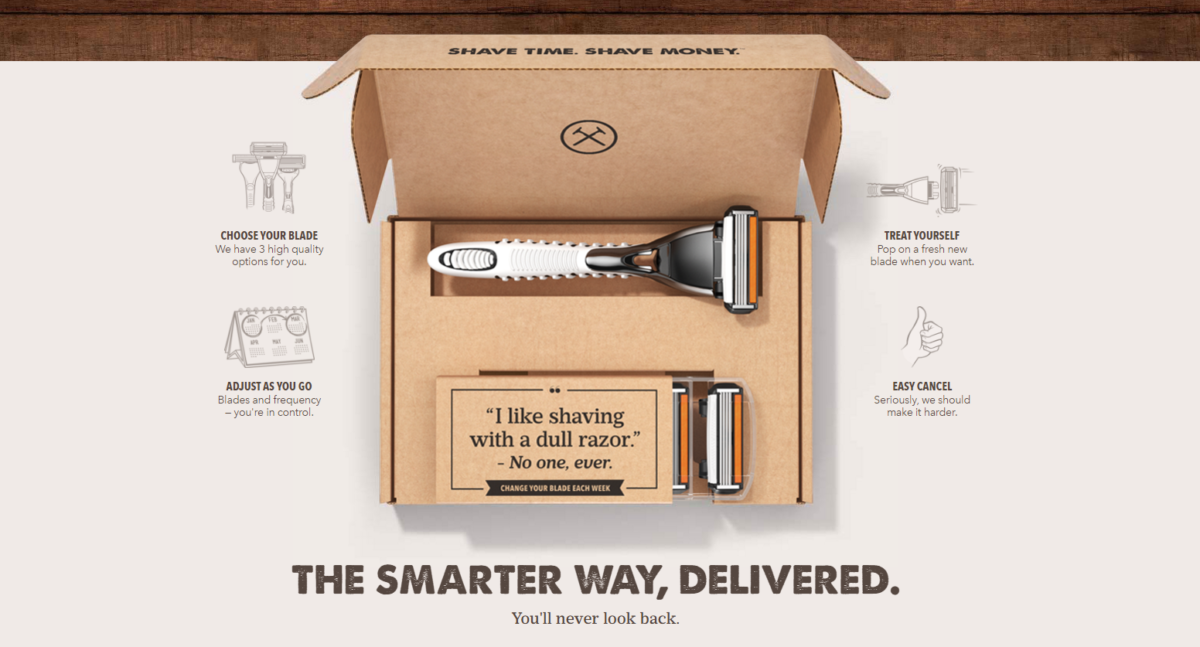How come that a razors company can be worth 1 Billion Dollars? Maybe you have heard about the unofficial 1 Billion dollars that Unilever paid to acquire Dollar Shave Club early this summer. Dollar Shave Club was founded by Michael Dubin and Mark Levine in 2011 with the idea to provide low cost razors to its customers. How has Dollar Shave Club managed to gain some of the market share in a market overly dominated by the old time Procter and Gamble’s Gillette?
The “winning formula” they used were the following:
Michael and Mark created a monthly subscription for razors. For one dollar a month they will send customers brand new razors. Simple right? By doing this, Dollar Shave Club not only solved the new hurdles of the current industry’s problem and at the same time built a brand around it. Let’s take a look into this winning formula:
- Price: Selling extremely affordable razors as compared to the ones available at the supermarket.
- Convenience: dollar shave club sends the razors every single month the consumer’s home. The customer does not have to worry about going to the supermarket and dealing again with the dilemma of what razors to buy. This has become an increased problem as razors where becoming fancier with multifunctional features.
- Brand: dollar shave club really understood its niche customers. Its customers want to shave and get on with the day. Too much information on the packages of common products, such as Gillette, can be at times “annoying” for the shopper. Dollar Shave Club designs a very simple package, which includes a thank-you note and an interesting quote that customers want to read. Hence, creating an experience value. By engaging in Dollar Shave Club’s subscriptions, customer felt that they were part of a club which also helped the raise its value.
As opposed P&G’s Gillette kept spending on R&D adding more blades and vibration features to their razors. Gillette did not realize that razors were already good enough, however their kept increasing the prices of their razors due to the additional features they incorporated. For me, seeing a Startup like Dollar Shave Club rise this fast, the biggest take aways are:
– We really need to carefully listen and understand our customers. It really does not take millions of dollars to beat the big company in the market, but one needs to listen to what customers are saying and implying.
– Once a product has achieved its optimal quality, customers will starting to pay for experience and the feeling of belonging rather than only for the product itself.
– A witty marketing strategy can help the product take off exponentially as company has a solid and clear value proposition important for its targeted customers. Dollar Shave Club’s very first video was viewed so many times that it broke their.
So, I have a question for you, what would you be willing to give for a dollar?
Sources:
https://stratechery.com/2016/dollar-shave-club-and-the-disruption-of-everything/
https://www.youtube.com/watch?v=Rh1FXXW-qIk
https://www.youtube.com/watch?v=ZUG9qYTJMsI
http://www.ft.com/cms/s/0/2aca7c08-4e69-11e6-8172-e39ecd3b86fc.html


